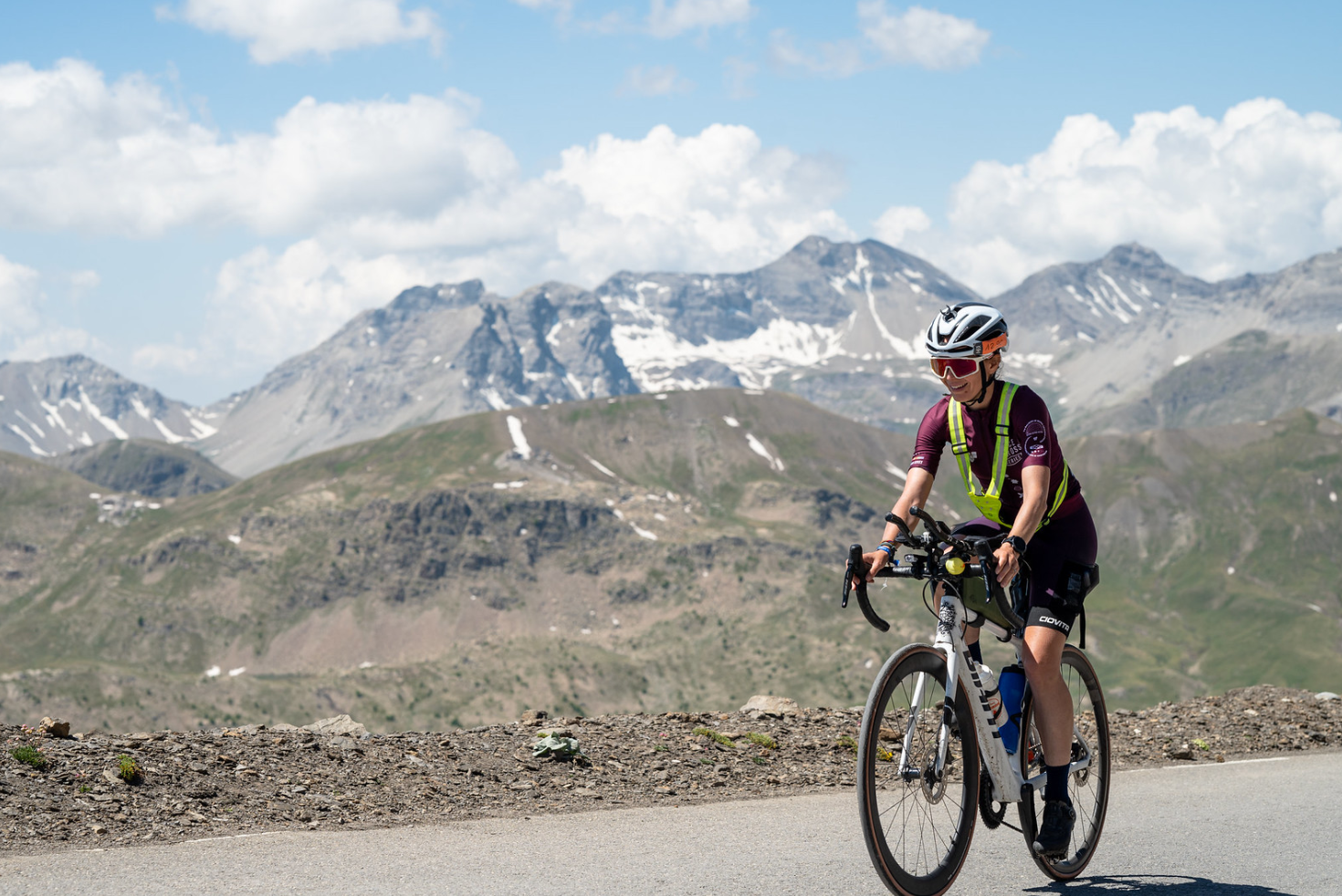The 10 most common ultradistance cycling mistakes (and how to avoid them)
Cyclists taking part in an ultradistance cycling event, taking a refreshment break in a natural alpine setting. Edouard Hanotte (@edhanot)
Ultra-distance cycling, also known as ultracycling, is a demanding discipline that is attracting more and more enthusiasts. Pushing your physical and mental limits over several hundred or even thousands of kilometers requires rigorous preparation. Yet many cyclists make the same mistakes that can ruin their experience and performance.
👉 In this article, discover the 10 most common mistakes in ultradistance cycling and, above all, practical advice on how to avoid them.
1) Failure to plan: the No. 1 cause of burnout
Without a minimum of organization, you start off too fast, don't manage your breaks properly and empty out too early. Planning doesn't mean a military programme, just a framework for progress without burning out.
Taking the time to plan your outings and your objectives helps you to keep having fun and to arrive whole.
To do: create a small, progressive calendar (weeks that build up slowly), visualize the route, set achievable milestones and define a "regular, not spectacular" pace strategy.
2) Underestimating nutrition and hydration
Without fuel or water, the machine stalls: headaches, empty legs, morale at half-mast. It's not a lack of courage, just energy.
The better you eat, the more available your body is... and your head too.
To do: simple nutrition plan = complex carbohydrates + a little lean protein + quality fats. Drink and eat a little and often. Test drinks/solids during training, never for the first time on the big day.
3) Forget cross-training
Doing the same thing over and over again can lead to minor aches and pains (back, knees, neck). Strengthening the body a little means riding more comfortably for longer.
No need for "hardcore" sessions: regularity > intensity.
To do: add 1-2 times/week a little strengthening (sheathing, lunges, back), mobility, yoga or swimming/running. You'll improve posture, power and overall endurance.
4) Neglect recovery and sleep
You make progress when you rest. If you pile on the rides without taking your foot off the gas, fatigue builds up and motivation drops.
When you're asleep and fresh, you're better able to cope with the effort and the unexpected.
Things to do: schedule days off, stick to a simple bedtime routine (regular hours, screen off), and monitor how you feel (abnormal fatigue = lighten up). Sleep is free money.
5) Don't test your equipment before the race
A new saddle, new shoes, untested clothing... and the result is irritation, pain or abandonment.
The rule: "tested = validated".
To do: validate everything in real-life conditions: position, saddle, outfit, lighting, bags, tools. Ride at least once in the rain and once at night, if the event calls for it. Adjust before the race.
6) Forget about time management (breaks/sleep/ravito)
Without a minimum of timing, we stop too long at the beginning... and not long enough at the end. Result: chaos.
Small, regular stops are better than big slumps.
To do: block simple windows to drink/eat and stretch for 2 minutes. Plan a micro-nap if you're feeling under the weather. Leave room for the unexpected (weather, mechanics) instead of chasing the schedule.
7) Sloppy mental preparation
In ultra tours, the head often gives way before the legs: weather, loneliness, doubt...
Preparing mentally means having the tools you need when morale is low.
To do: visualize the key passages, breathe calmly when the going gets tough, advance by micro-objectives (to the next bend, to the next signpost), keep a simple mantra ("calm and steady"). Write down your plan on a small memo.
8) Ignoring body signals
"Coûte que coûte" ends badly. Rising pain, dizziness, severe cramps: these are messages.
Listening to yourself doesn't mean giving up: it means enduring.
To do: distinguish between normal fatigue and serious alertness. Lighten your pace, hydrate, take a little salt/carbohydrate if necessary. If the pain persists or worsens, stop and consult your doctor - your health comes first.
9) Training on a single pitch
Ultracycling up an Alpine pass: bike loaded with panniers, reflective vest and clear skies. Photo credit: © Jennifer Nguyen ( @jennifernguyen.p )
Flat only = surprise on the big day when faced with climbs, wind, night or paths.
Vary a little and you'll gain confidence.
To do: hilly mix, small hills, windy outings, different weather, and a night outing if the event includes one. You'll learn your rhythms... and your reactions.
10) Have a rigid strategy
Nothing goes exactly to plan: the weather, the mechanics, the stomach. A "concrete" strategy quickly becomes a trap.
Flexibility is quiet performance.
Do: keep a plan... and a plan B. Adapt pace, nutrition and objectives to actual conditions (weather, body condition). It's better to finish clean than to aim too high and explode.
Conclusion
Avoiding these 10 pitfalls makes ultracycling smoother, safer and, above all, more enjoyable. The recipe can be summed up in four words: plan, test, listen, adapt.
Ready to line up and push your limits - at your own pace? 🚴♂️💪


